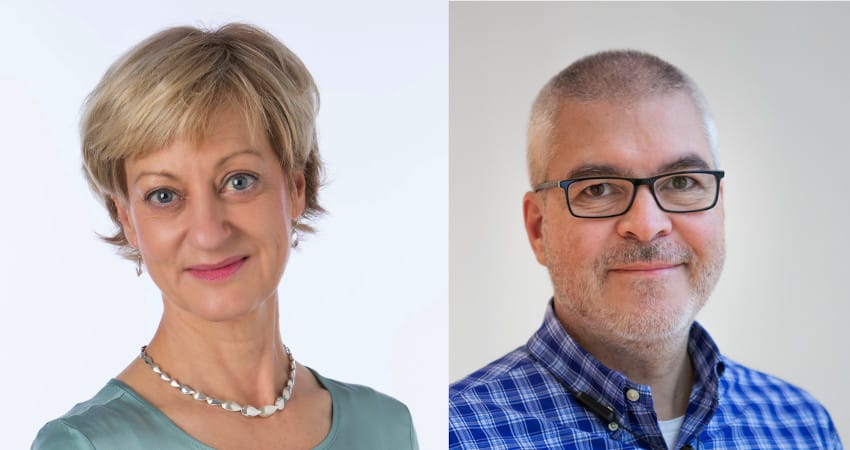ALPAO is proud to have Profundus among its renowned customers. In September 2022, Asa Lindstrom (CEO) and Zoran Popovic (Founder/Senior Optical Engineer) gave us an interview about their current and future projects. They answered also some questions about Adaptive Optics technology and applications but also about their feedback on ALPAO’s products.
ALPAO – Can you introduce your organization and highlight to us your differentiation point versus your competitors?
Asa – Our organization has 5 employees right now, we have a core team with very skilled engineers and Zoran of course as the founder too. Right now, we are in a phase where we are delivering our first systems, our first camera for research purposes was delivered on September 7th, 2022, to Oslo’s University Hospital, and the system for Sahlgrenska’s University Hospital, in Mölndal (Sweden), will be delivered during the fall.
Why do you use Adaptive Optics (AO) and deformable mirrors in your devices?
Zoran – We chose to use deformable mirrors because we found that it is a good choice for correcting aberrations. They are suitable for implementation in our instrument, and we specifically chose ALPAO because ALPAO has a wide range of mirrors and can deliver them in different sizes. As we need two different deformable mirrors, we decided that ALPAO would be the best choice for Profundus.
How long have you been working with ALPAO?
Zoran – As researchers, we began working with ALPAO when we bought our first mirror in 2010. As a company our first purchase was 2 years ago, in 2020.
What advantages can our deformable mirrors and our technology provide to eye diagnostic?
Zoran – ALPAO offers a range of deformable mirrors in different sizes that can be implemented in a system. It gives us a larger freedom because we can implement a design that best matches our design. We can use a suitable pupil magnification in the system and find a matching mirror in the range ALPAO provides.
For eye diagnostics, the increase in both resolution and contrast we obtain with adaptive optics combined with a large corrected field of view is a key to look deeper into the retina, to see smaller structures and to facilitate earlier diagnosis.
What perspectives do you see for AO in retinal imaging?
Zoran – I believe that adaptive optics in retinal imaging will be a game changer. There are currently a multitude of research instruments globally and we have been on this line of research for a long time. It began with only a few labs which had the possibility and knowledge to use adaptive optics and now it is spread. There are also scanning laser ophthalmoscopes and optical coherence tomography systems with adaptive optics for research.
I believe it is a matter of time before there are instruments available on the market for clinical use as well and that is where we find a niche for our system. We can provide a larger corrected area in one image in our flood illumination system that can easily be increased to cover a larger central retinal area with just a few images. I think this is the key to be able to penetrate the clinical market. If it takes too long to image a patient, implementation in a clinical setting will be more difficult.
For now, most of your customers are from research and clinical use? And how do you see the evolution in the near future?
Zoran – We have started to sell research instruments to establish collaborations with researchers and improve our design with user feedback.
Asa – Also, we have a plan for CE marking. We understand that from a clinician’s point of view it is crucial that the exam is time efficient. That is our unique selling point. Also, there is ongoing research within other areas, such as neurological and cardiovascular diseases, to image the structure of the retina to try to find early signs of disease.
Profundus is a start-up company developing and selling an advanced retinal camera for wide-field high-resolution retinal imaging. PROFUNDUS was founded as a result of a successful collaboration between four visionary researchers: Jörgen Thaung, Zoran Popovic, Mette Owner-Petersen, and Per Knutsson. The research team successfully designed and built the first multi-conjugate adaptive optics system for retinal imaging.


